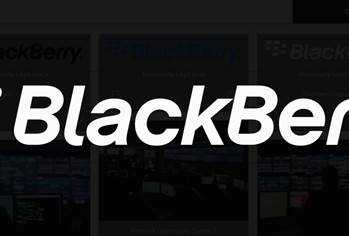
When investing in technology, financial professionals today are caught in a tug-of-war between two powerful opposing forces.
On one side is an enterprise software industry that is keen to sell an unceasing array of new functionality. On the other is their own desire to operate systems that are free from complications and easy to upgrade.

All too often however finance executives are lured into adding on new features and functionality – or worse still, customising their system. The result can quickly evolve into a confusing tangle of features and functions that proves difficult to manage and harder still to change.
The need to tread carefully when designing and purchasing accounting and ERP systems does not however seem to be dampening the enthusiasm of buyers.
While analysts disagree on the global ERP market’s exact size – Statista estimates its value in 2025 as US$55.88 billion ($88.83 billion), while HG Insights puts it at US$147.7 billion ($234.79 billion) –spending on core enterprise software is massive. Even just the accounting software market is sizeable, with the Business Research Company estimating it will hit US$21.18 billion ($33.67 billion) this year at a compound annual growth rate of 9.7 percent.
That's a lot of money for a set of software tools whose most fundamental requirement – running a general ledger – has hardly changed in decades.
But what technology has enabled however is for much of the work of a finance professional to be automated – which is a critical factor, given the general ledger is being influenced by a complex set of business and regulatory requirements, such that it is now the core of a vast network of dependent applications that include everything from traditional accounting specific tasks such as invoice processing, expense management, and reporting, but that has also now covers broader activities such as managing procurement, payroll, and compliance obligations.
“For accountants, new technology has been a friend much more than an enemy,” said Chris Freeland, CEO of CPA Australia.
“From the humble abacus to spreadsheets, our profession has been quick to embrace more efficient ways of working to achieve positive outcomes for their businesses, as well as individuals.”
According to Freeland, AI now has the potential to be this generation’s calculator, by reducing mundane tasks and freeing up accounting professionals to focus their skills and expertise as strategic thinkers.

“The biggest challenge for accountants is not automation and AI itself, but learning and keeping pace with developments, to ensure they have the necessary skills and experience to take on these increasingly important roles,” Freeland said.
For finance professionals today, the mantra for purchasing software needs to be based around both choosing carefully, and maintaining courage in their convictions.
Unshakeable foundations
For Louise Hulley, group CFO at the broad-based financial services organisation Balmain, the core function of an accounting system remains the general ledger. But its true value comes through how it automates and accelerates understanding of financial processes.
“From a financial control perspective, I’m more interest to see what’s happened if something goes wrong,” Hulley said.

“The reporting capabilities of these ERPs are so much more than the old traditional general ledgers, and modern ERP also allows for more end-to-end processes, such as authorisations or rejections.”
“Lots of stuff that used to happen outside of the ERP, in terms of financial control, now it happens inside, so from an audit perspective you can automate a lot more of your audit and interrogate much more holistically.”
Balmain went live with a NetSuite ERP implementation in May 2024, and is now gearing up to introduce new levels of automation.
“With modern ERP, if it doesn’t have the functionality itself, then it has an app that links to it,” Hulley said.
“So if you want to automate your invoice input process, it is a relatively simple thing to do. The trick is getting your core process right.” - Louise Hulley, group CFO, Balmain
A principled approach
The desire for a simplified environment was one of the key criteria at Telstra when it came time to select a replacement for its decades-old finance, procurement, and supply chain platforms.

According to Bronwyn Jones, Telstra’s financial management chapter area executive, the company had found itself running three ERP systems across 14 counties, and saw an opportunity to coalesce finance, supply, and procurement into the one global SAP-based ERP.
“We wanted to leverage out-of-the-box functionality, we didn’t want any embedded logic in our code sets, and we wanted straight-through processing and data transparency,” Jones said.
To achieve this outcome, Jones knew that she and her team would have to fight against the tendency to accommodate the requirements of individual teams. A set of design principles were agreed upfront with the executive steering committee, including challenging all requirements and not allowing customisations.
“This empowered the team,” Jones said. “If they hit a wall with a stakeholder and requirements, they could come back to the principles.”
This strategy also ensured Telstra could avoid customisations within the system, with all financial and non-financial data held within a data harmonisation hub. Jones said this would pay off any time Telstra decided to upgrade the core system.

“We are already talking about our next upgrade, and we know that that upgrade will happen so much quicker, and it will be cheaper to do because of the fact that we kept everything clean when we went live,” Jones said.
Importantly, taking a clean approach to implementation also enabled the creation of standardised reporting suites.
“The conversation is never about whether the numbers are correct - it is about what you do with them,” Jones said.
“That is a game changer for us that really helps our people and gets cut-through faster. For example, we now have trend-based billing data all the way down to the individual billing level in a really clean way, that the analysts can click through and see.” - Bronwyn Jones, financial management chapter area executive, Telstra
A platform for capability
While creating a clean and uncomplicated core accounting system may initially appear limiting, at the Brisbane-based not-for-profit healthcare provider Mater, that approach is providing the freedom to extend the capabilities of the finance team and their value to the business.

According to Mater’s chief financial officer Tanya Cain, the decision to implement Microsoft’s Dynamics 365 as the core ERP two years ago was somewhat influenced by her not-for-profit organisation’s desire to reduce the cost to serve over the long term, but it was also paying dividends in other ways.
“With ERPs these days it is very hard to choose from one to another,” Cain said.
“There is a high level of functionality that you just expect – it’s a ticket to the game – so then it comes down to cost, including ongoing maintenance costs. But you also want flexibility and interoperability with other systems – that has become very important.”
For Cain, interoperability was translating into opportunities for automation, which in turn delivered value by enabling staff to be reallocated to higher value tasks.
“Your expectation of ERPs is that there is a lot less you have to worry about, such as reconciliation or journal entries, because the system is just taking care of it,” Cain said.
“The functionality is there – it’s in our hands to understand it and turn it on.”
While much of the discussion regarding automation was being fuelled by the introduction of new AI capabilities into ERP and accounting software, Cain said the short term opportunity was to achieve automation results by using low-code development tools.

“That is an immediate functionality that we could take advantage of, where finance departments can help themselves, rather than having to turn to the IT departments that suffer from inordinate demand,” Cain said.
“For example, automating the workflow between HR and finance is not going to be on IT’s to-do list, whereas you can teach accountants drag and drop, low code and work with HR to gain efficiencies together.
“AI is on the roadmap, and it is one of those things we need to understand to leverage. But low-code functionality is a big untapped value add, whereas AI is highly dependent on the quality of your data.” - Tanya Cain, CFO, Mater
Maintaining simplicity
The desire to maintain a simplified environment is not restricted just to larger organisations. While the rise of cloud accounting has brought new and intuitive functionality to smaller businesses, it has also led many to cobble together finance systems using multiple different apps, which can quickly become unwieldy.
According to Tim Huett, a former finance manager with Macquarie Group who now works with startup organisations, this approach could lead to unforeseen outcomes.
“You have these small businesses that have anywhere between two and 20 subscriptions that are delivering somewhere between 20 percent and 90 percent of their business and or finance function,” Huett said.
Hence one of his first tasks when working with a business was to rationalise its portfolio.
“It’s like the Netflix model – it’s really hard to unsubscribe,” Huett said.
“Bean counters don’t like change. These apps have brought an opportunity to stop doing mundane stuff, but they have brought problems as well.”

While the choices presented to buyers of ERP and accounting solutions are numerous, often the purchasing decision comes down to simply wanting to do the essentials better by running the finance function more efficiently, and with greater transparency.
This has been the case at Tasmania’s Devonport City Council, where finance manager Nadine Maggs has overseen a recent implementation of TechnologyOne’s CiA. Maggs said the organisation’s choice was built around a very clear idea – delivering the best outcome for the people of Devonport.
“When I first started (in accounting) we used to do bank statement entry and bookkeeping using manual calculations – there were a lot of errors that could be made and we had no visibility,” Maggs said.
“Now everything is proactive, because you have vision and can see data that is current.
“For everything we do, we have to have a reason for it, and a long-term goal that means something to a community. You can only manage what you can measure, so if you can have a program that is allowing you view things in a quicker, more efficient way, it allows you a better ability to make decision and check things as they progress. And that allows Council to be better equipped for providing better services to the community.”
State of Finance Tech Champion
We are proud to present this year's State of Finance Tech sponsor.








